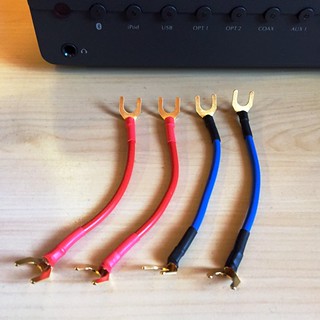Coming late to the discussion but to summarize my opinions:
Bi-wire off a one-box stereo amp (assuming it doesn't have four separate power amps within) is a waste of time.
Over the years some speaker cable manufacturers spoke of using separate configurations for HF and LF and there may have been some merit in those, but they may have been "snake oil" as they say around here or ti may just have been a work-around for shiddy speaker cables generally of old. I even bought some in the 90s (Ixos I think) which had stranded cores for HF and solid cores for LF, or the other way around, I forget. Bottom line though is that it's probably better to just spend the money on better speakers or better / thicker speaker cables.
Bi-amping off two separate power amps - or an integrated amp with an add-on power amp - can be brilliant but don't expect a doubling of loudnessicity.
Depending on your speakers and amps and personal preferences you may find "vertical" bi-amping - where one amp drives the HF and LF of one speaker, the other amp the other speaker - or "horizontal" bi-amping - where one amp drives the HF on both speakers, the other amp drives the LF on both speakers, works best. See:
http://usr.audioasylum.com/images/2/26701/Horizontal_and_Vertical_Biamping.jpg
for illustrations.
Horizontal bi-amping works best for situations where you're using an integrated amp plus a daisy-chained power amp, obviously. You can experiment with which amp drives HF and which drives LF best. I personally prefer using the more powerful of the two to drive the LF, as I feel the bigger power capacitors in the more powerful amps give bigger bass drum thumps whilst the smaller capacitors in the less powerful amp drive the more constant load of the HF better, whilst some will argue the reverse. Your ears, your music, your choice.
Bi-Amp Speakers with Brass Jumpers
Those brass jumpers are just plain nasty. Get your local hifi shoppe to make you up some 6 inch to foot long jumpers using the same speaker cable as your main runs or just connect the terminals using the screw-down parts of the terminals (assuming you can get two cable ends into whichever terminals you also use for your amp-to--speaker runs). The sound will improve immensley. Remember the manufacturer built these speakers to be bi-wired or bi-amped and the jumpers are just there so the speakers work without bi-amping/wiring, not for optimal sound quality at all.
Tip to avoid loosing the brass jumpers is to just loosen the speaker terminals, rotate the brass jumpers out of one set of ends so they're no longer making contact and re-tighten the screw-downs. Them you or your Memsahib won't throw them out or "put them away somewhere safe" - never to be seen again. BTDT.
Wierdly, some people (Linn I tink) used to recommend running the jumpers diagonally, i.e. HF+ to LF- and HF- to LF+, which runs the bass and treble anti-phase. You can experiment and decide for yourself.
Not sure if you'll b*gger the crossover circuits in the process though, so proceed with caution.

